Rara Avis
1996
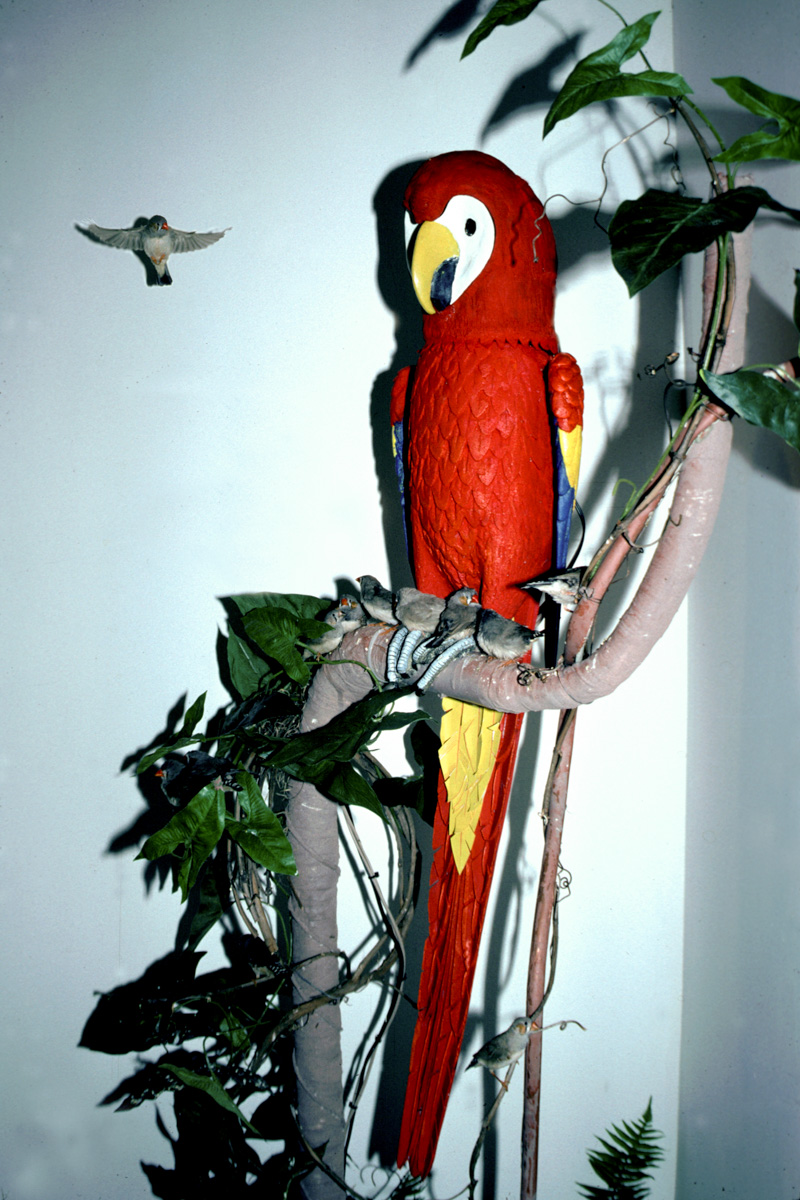
Rara Avis is an interactive telepresence work in which local and remote participants experience a large aviary with 30 birds from the point of view of a telerobotic macaw. The work premiered in the context of the exhibition "Out of Bounds", curated by Annette Carlozzi and Julia Fenton. The exhibition took place between June 28 and August 24, 1996, at Nexus Contemporary Art Center, in Atlanta, and online, as part of the Olympic Arts Festival.
In Rara Avis, participants see a very large aviary as soon as they walk into the room. In front of this aviary the participant sees a virtual reality headset. Inside the aviary the viewer notices a strong contrast between the thirty flying birds (zebra finches, which are very small and mostly gray) and the large tropical macaw, which is perched and immobile. This macaw, like any other, has a long saber-shaped tail, a curved powerful bill, and brilliant plumage. Upon observing the behavior of the birds, the viewer notices that the macaw—the most commanding bird in the aviary—appears motionless. Only its head moves. This tropical bird is in fact a telerobot. Since the macaw's eyes are on the front of the head, as is the case of an owl, the telerobot is called a Macowl.
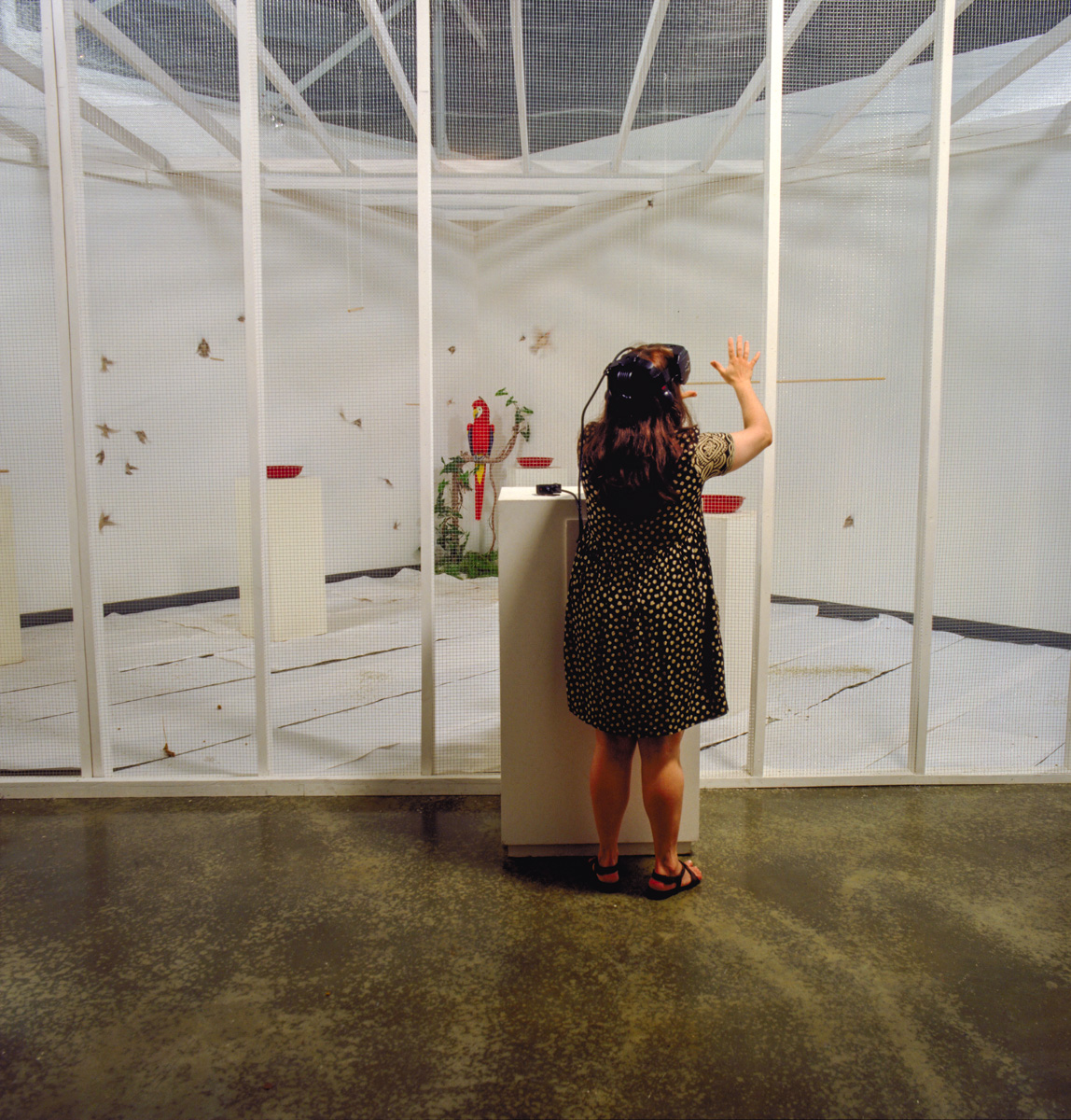
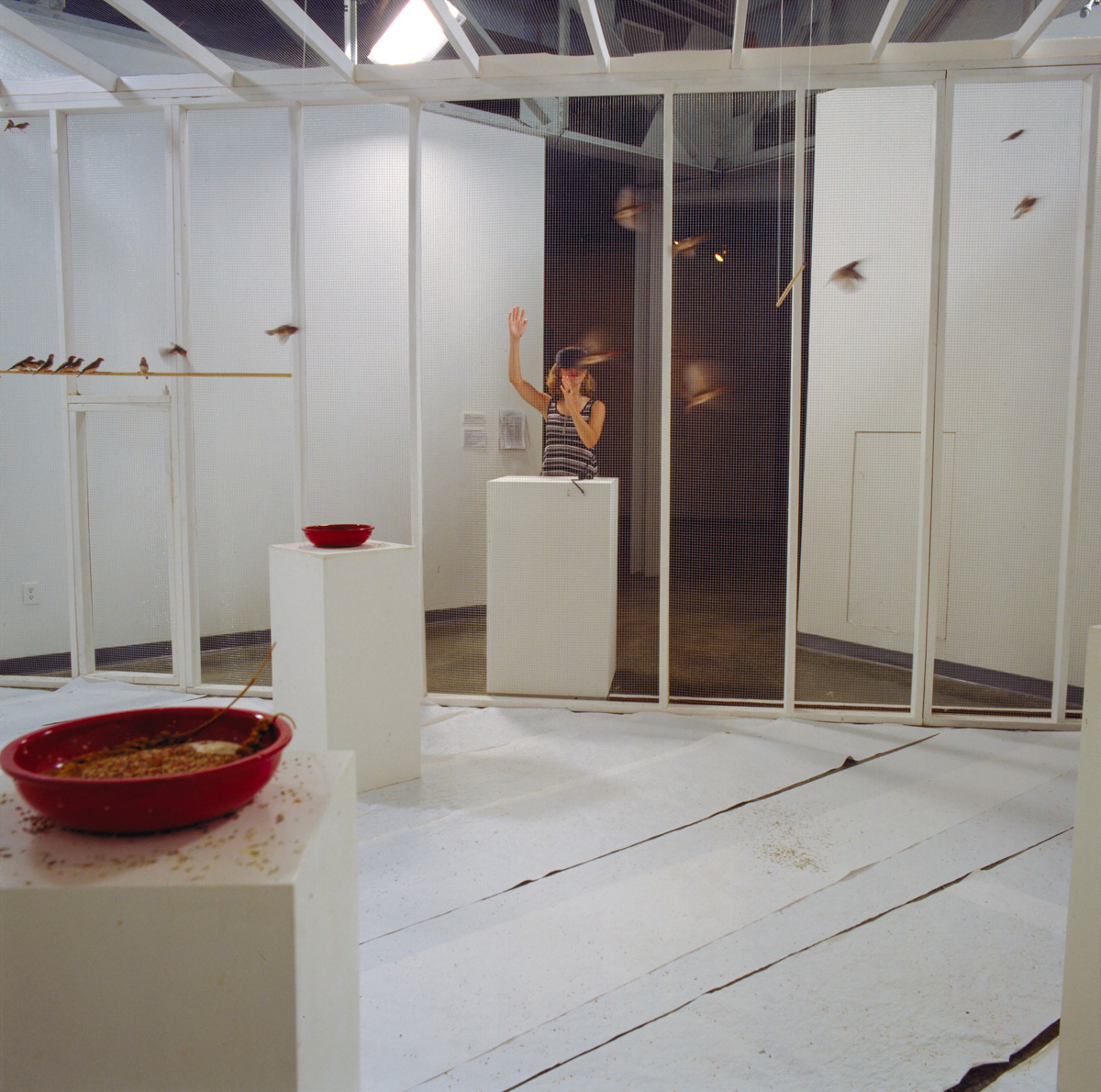
The viewer is invited to put on the headset. While wearing the headset, the viewer is transported into the aviary. The viewer now perceives the aviary from the point of view of the Macowl and is able to observe themselves in this situation from the point of view of the macaw. The tropical bird's eyes are two CCD cameras. When viewers move their head to left and right, the head of the telerobotic Macowl moves accordingly, enabling the participants to see the whole space of the aviary from the Macowl's point of view. The real space is immediately transformed into a virtual space.

The installation is permanently connected to the Internet, enabling remote participants to observe the gallery space from the point of view of the telerobotic Macowl, and also move its head from left to right. Through the Internet remote participants use their microphones to trigger the vocal apparatus of the telerobotic macaw, which is heard in the gallery. The body of the telerobotic Macowl is shared in real time by local participants and Internet participants worldwide. Sounds in the space, usually a combination of human and bird voices, travel back to remote participants on the Internet.
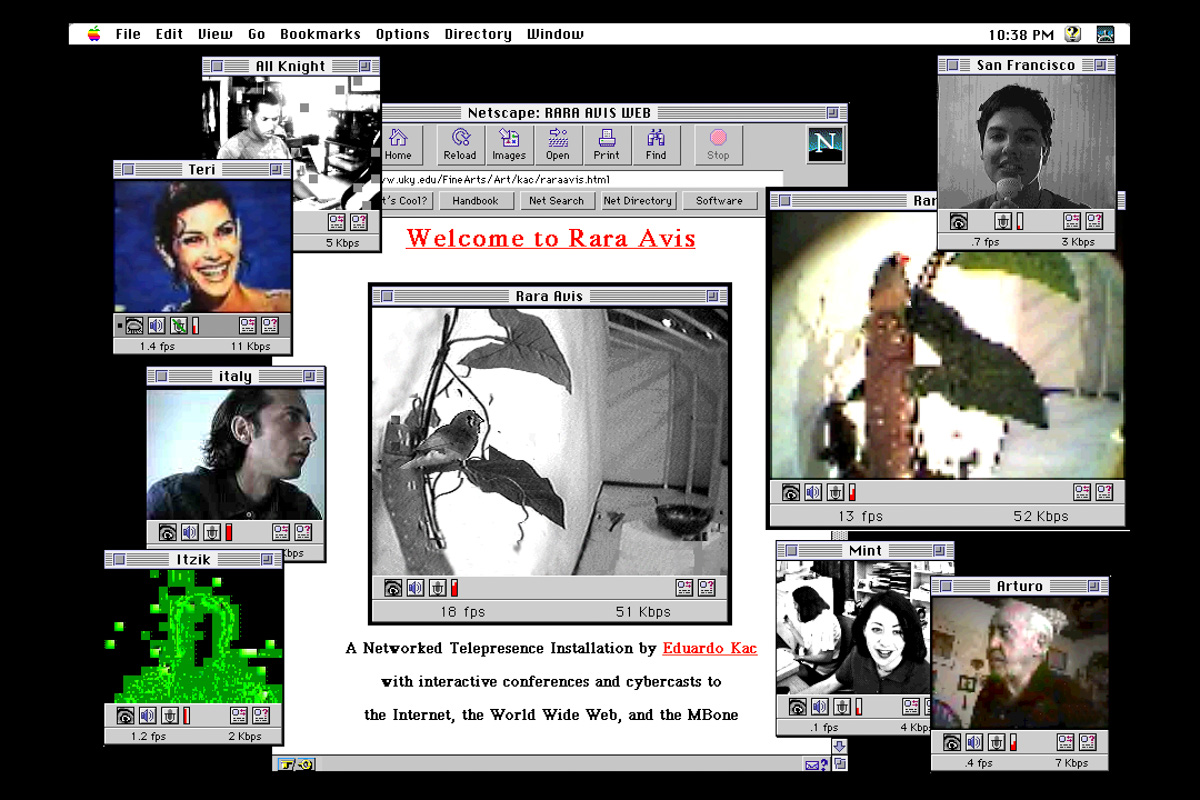
By enabling the local participant to be both vicariously inside and physically outside the cage, this installation creates a metaphor that reveals how new communications technologies enable the effacement of boundaries at the same time that they reaffirm them. This telepresence work also addresses issues of identity and alterity, projecting the viewer inside the body of a rare bird who is the only one of its kind in the aviary and is also distinctly different from the other birds (in scale, color, and behavior). The piece can be seen as a critique of the problematic notion of "exoticism", a concept that reveals more about relativity of contexts and the limited awareness of the observer than about the cultural status of the object of observation. This image of "the different", "the other", embodied by the telerobotic Macowl, is dramatized by the fact that the participant temporarily adopts the point of view of the rare bird.
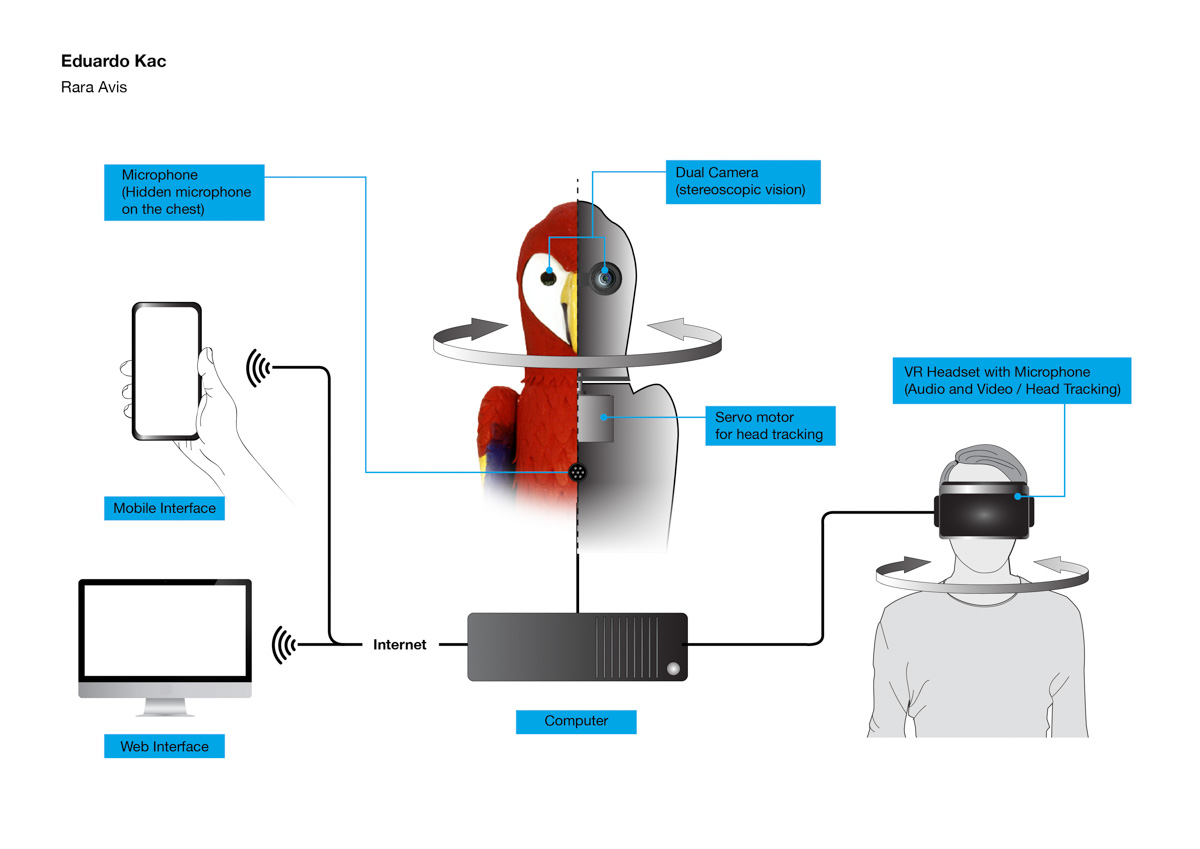
This piece creates a self-organizing system of mutual dependence, in which local participants, animals, a telerobot, and remote participants interact without direct guidance, control, or external intervention. As the piece combines physical and non-physical entities, it merges immediate perceptual phenomena with a heightened awareness of what affects us but is visually absent, physically remote. Local and online participants experience the space in different ways. The local ecology of the aviary is affected by Internet ecology and vice-versa.
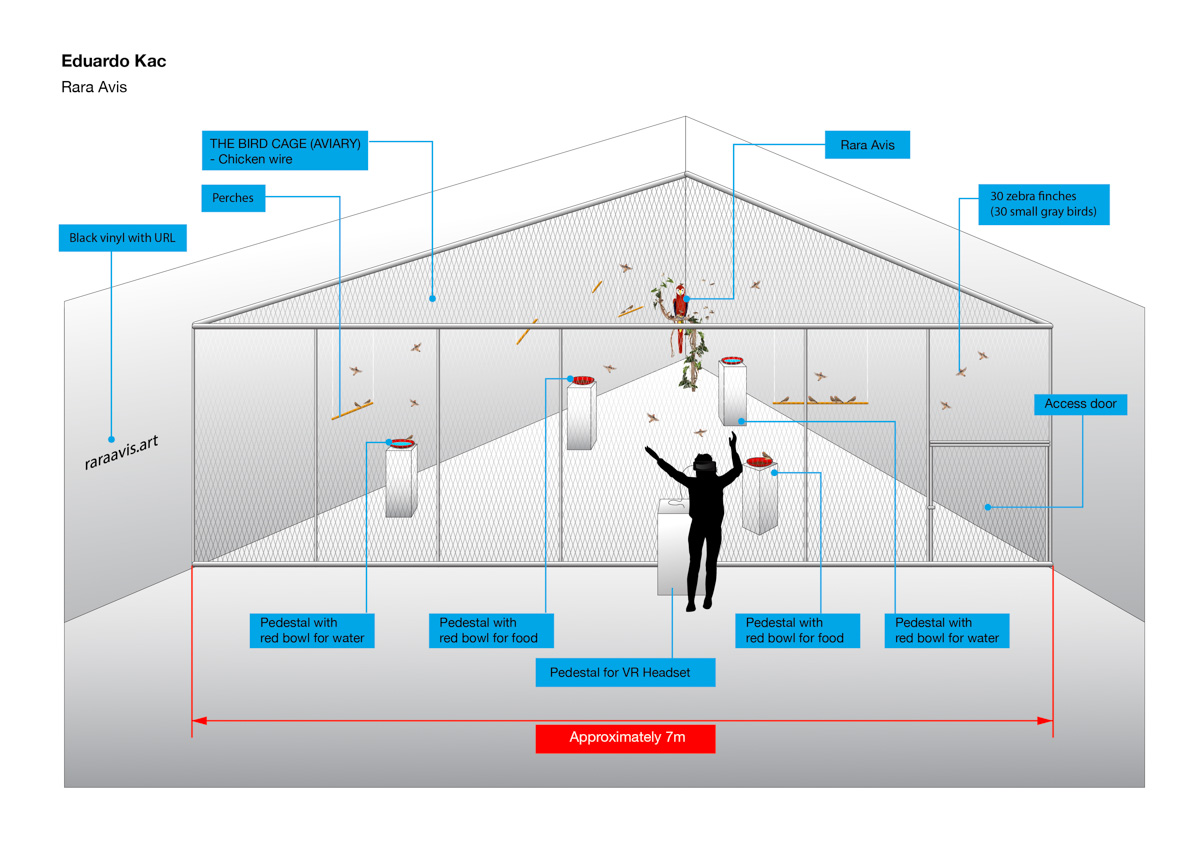
The text above is an excerpt from: "Ornitorrinco and Rara Avis: Telepresence Art on the Internet", Leonardo, Vol. 29, N. 5, 1996, pp. 389-400.